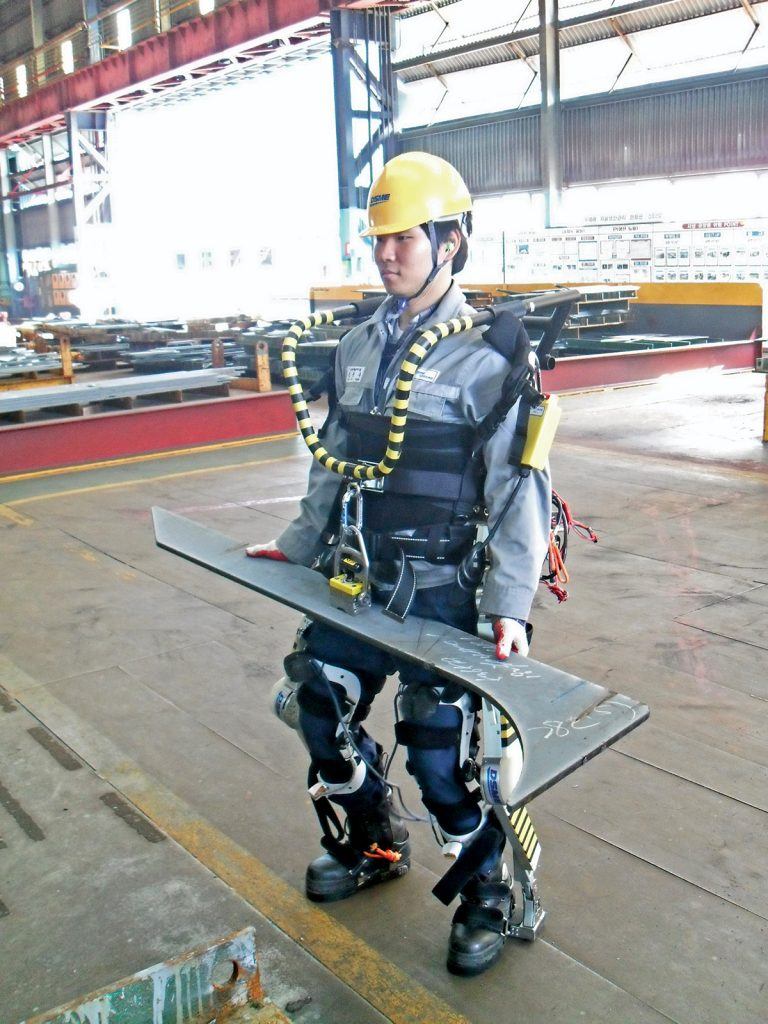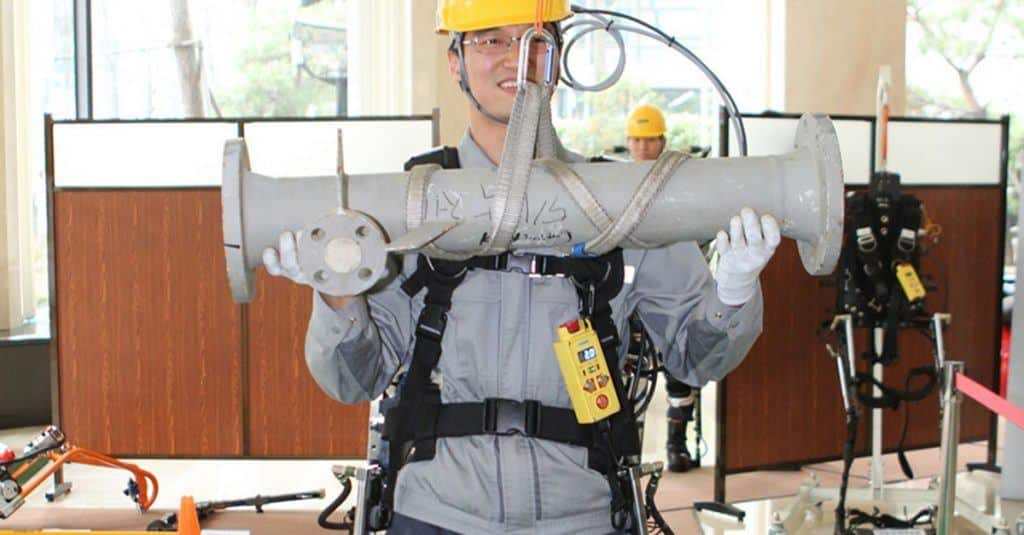Exoskeleton Robot: Can “Iron Man” Suit Increase Productivity in Shipyards?
Daewoo shipyard of South Korea, the maker of some of the world’s largest vessels, is now planning to use innovative robotic exoskeletons to makes its workflow productive. The “Iron Man” type exoskeletons, based on the Human- Robot interaction (HRI) technology, will allow shipyard workers to lift heavy metal parts, pipes and other objects with extreme ease.
According to DSME, the wearable robot can be worn over the body like clothing, increasing the muscular strength of workers to easily lift over 30kg of weight. The wearable robot is intended to help DSME employees to carry heavy material and reduce the number of musculoskeletal disorders which commonly affect shipyard workers.
The exoskeleton works almost like the “Iron Man” suit. Padded straps at waist, thighs and chest connects the user to the suit, which has foot pads at the base where the feet are strapped. Hydraulic joints and electric motors that run across the robotic exoskeleton are powered from a backpack.
According to website New Scientist, the robotic suit can fit anyone with height in the range of 160 to 185 cm. Made from carbon, aluminium alloy and steel, the robotic frame weights approximately 28 kg and has a three-hour long battery life. Workers wearing exoskeletons can lift objects of up to 30 kg and allows them to walk at a “normal” pace. Though the current prototype can allow lifting only 30 Kg, research is already underway to reach the target lifting capacity of about 100 kg.

Though the robotic technology seems promising, it is to understand how comfortable will it be for workers to put it on and work through out the day (Do keep in mind that it’s battery life is three hours, thus it needs to be worn only when lifting of heavy weights is required).
Also, the exoskeleton might make the shipyard workers more capable of lifting heavy loads, however, if the skeletal frame reduces their working speed, can the overall productivity still improve?
A few drawbacks which can be noted and addressed are:
– Reduced working speed of workers
– Inability to lift heavier load
– Lack of Comfortability and user-friendliness
– Restricted twisting Motion
– Risk of slippery surface
– Need for frequent charging
– Dearth of safety aspects
Robotic technology is speedily making its way into the shipping and shipbuilding industries with major shipyards trying to maximise automation in every possible process. A few of the biggest shipyards are known to have more than 50% automation in their processes. Moreover, technologies like 3-D printing, along with several other innovative systems are being extensively tried and tested for successfully introduction in the shipbuilding industry.

The industrial exoskeleton robot development using Human- Robot interaction (HRI) technology is one of the four areas of Daewoo shipyard’s Vision 2020 strategy, which includes development application and commercialisation of high performance robots and speciality robots, which the company believes, are essential to improve productivity.
First showcased in April 2013, the Iron Man – Wearable robot prototype has been under constant research and development for improving its lifting capacity and for implementing it in the Okpo shipyard facility at the earliest. According to some reports, after the first successful pilot program last year, Daewoo shipyard is already in the process of rolling of exoskeletons for regular use in the shipyard.
DSME Facility
Over to you…
Do you think this technology will help to improve the overall productivity of the shipyards and reduce the risk of workers?
Let’s know your views in the comments below.
Reference: Newscientist/ Daewoo Shipyard

About Author
Raunek Kantharia is a marine engineer turned maritime writer and entrepreneur. After a brief stint at the sea, he founded Marine Insight in 2010. Apart from managing Marine Insight, he also writes for a number of maritime magazines and websites.
Do you have info to share with us ? Suggest a correction
Subscribe To Our Newsletters
By subscribing, you agree to our Privacy Policy and may receive occasional deal communications; you can unsubscribe anytime.



